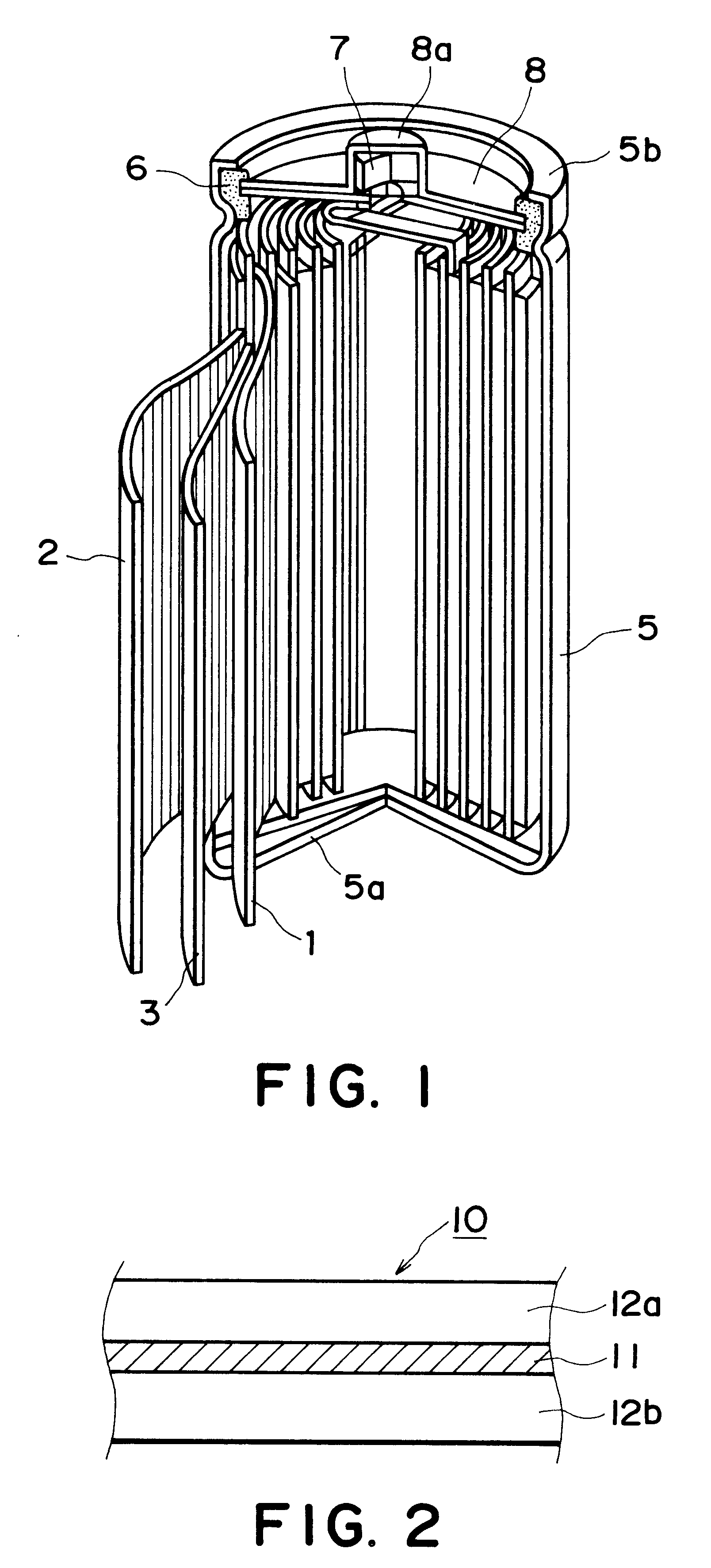Carbonaceous electrode material for secondary battery and process for production thereof
a secondary battery and carbonaceous electrode technology, applied in the direction of li-accumulators, electrochemical generators, cell components, etc., can solve the problems of material adversely affecting the resultant carbonaceous material, waste of active substances, and small dedoping capacity per se determining the battery performance (discharge capacity)
- Summary
- Abstract
- Description
- Claims
- Application Information
AI Technical Summary
Benefits of technology
Problems solved by technology
Method used
Image
Examples
example 1
Coconut shell char (available from M.C. Carbon K.K.) was pre-calcined for 1 hour at 600.degree. C. in a nitrogen gas atmosphere (normal pressure) and then pulverized to form a powdery carbon precursor having an average particle size of 25 .mu.m Then, the powdery carbon precursor was subjected to two cycles of potassium removal treatment, each including dipping within 35%-hydrochloric acid for 1 hour and then washing by dipping within boiling water for 1 hour, to obtain a treated carbon precursor. The thus-treated carbon precursor exhibited a potassium content of 100 ppm (by weight) or below. Then, 10 g of the treated carbon precursor was piled in a ca. 1-2 mm-thick layer in an alumina-made boat and then placed in a horizontal tubular furnace of 100 mm in diameter to be heated for 1 hour at 1100.degree. C. for carbonization while flowing nitrogen gas at a rate of 10 liter / min.
The properties (including pore volume, potassium content, specific surface area (S.sub.BET), H / C and d.sub.00...
example 2
A carbonaceous material was prepared in the same manner as in Example 1 except that the carbonization temperature was changed to 1200.degree. C.
example 3
A carbonaceous material was prepared in the same manner as in Example 1 except that the carbonization temperature was changed to 1300.degree. C.
PUM
| Property | Measurement | Unit |
|---|---|---|
| specific surface area | aaaaa | aaaaa |
| pore diameter | aaaaa | aaaaa |
| temperature | aaaaa | aaaaa |
Abstract
Description
Claims
Application Information
 Login to View More
Login to View More - R&D
- Intellectual Property
- Life Sciences
- Materials
- Tech Scout
- Unparalleled Data Quality
- Higher Quality Content
- 60% Fewer Hallucinations
Browse by: Latest US Patents, China's latest patents, Technical Efficacy Thesaurus, Application Domain, Technology Topic, Popular Technical Reports.
© 2025 PatSnap. All rights reserved.Legal|Privacy policy|Modern Slavery Act Transparency Statement|Sitemap|About US| Contact US: help@patsnap.com


